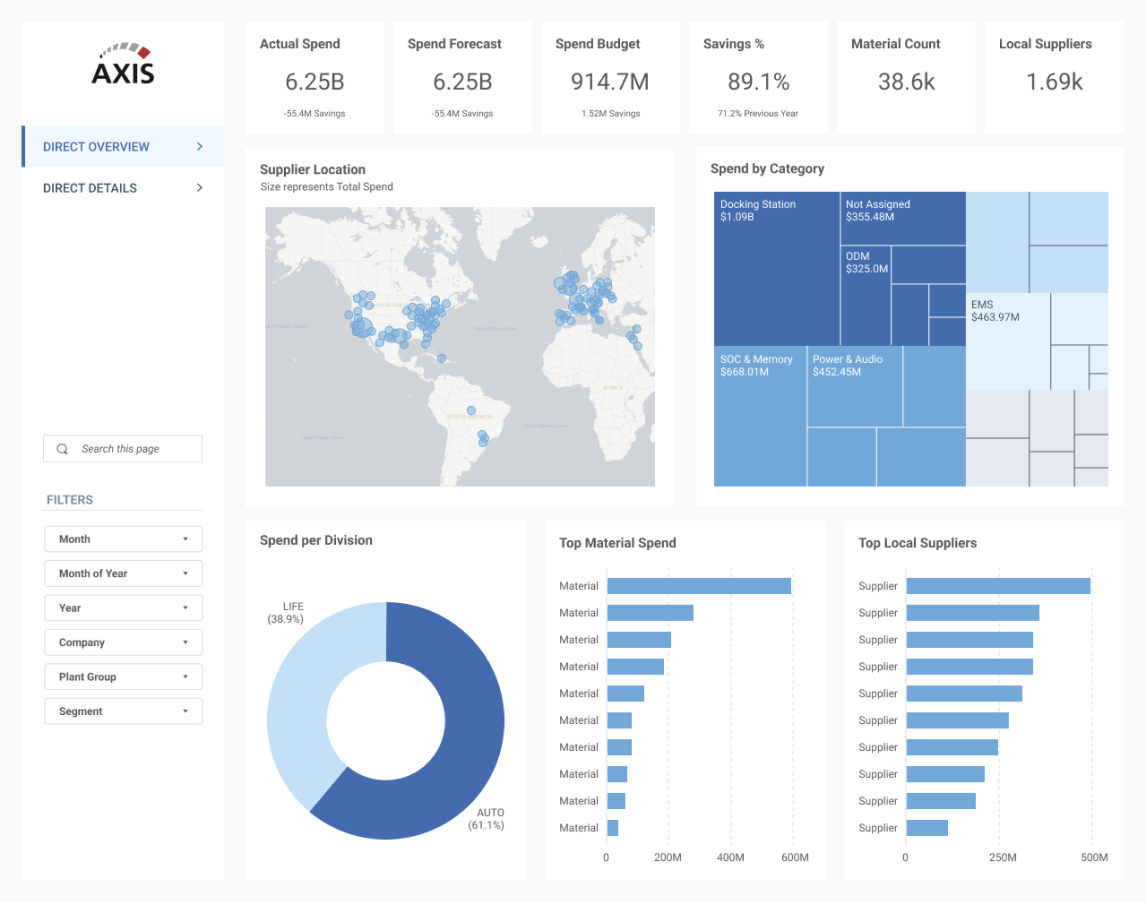Transforming risks into opportunities: One company's journey to a Modern Data Platform
Manufacturing
Platform Migration
Modern Data Platform
When our customer was forced to sunset critical data pipelines, they had the foresight to turn it into an opportunity to build a modern data platform that better served the entire company.
John Moffett, Axis Group
Meeting the Challenge
How can a company turn legacy software risks into a modern data platform opportunity?
Sometimes it takes a hard deadline to decide to make deeper changes.
When Adobe and Microsoft announced end of support for the ancient and vulnerable Flash player, SAP in turn announced end-of-life for dashboards that rely on Flash in its Business Warehouse (BW) environment—and many legacy customers were left wondering how they would serve their users.
For our client, a Fortune 500 consumer electronics manufacturer, BW's inflexible legacy platform was already a barrier between the company's data producers and its sophisticated and demanding data consumers. It was becoming increasingly difficult and costly to scale and govern procurement data across multiple data teams and platforms. BW's value was already hard to justify, and the end-of-life announcement was simply the final blow.
That's when our client realized that eliminating the aging and risky technology was really an opportunity to make a strategic investment in its data architecture. Rather than simply migrating existing reports and ETL into a different BI platform, they asked Axis to decommission its BW pipelines and migrate them to a new, robust modern data platform.
That's how the company turned its end-of-life deadline into an opportunity to build a flexible and scalable framework that would make a real difference and allow users to drive more value from data.

Our Solution
Axis built a flexible modern data platform that reduced cost, mitigated risk and provided a single source of truth.
After assessing our customer’s unique challenges, and with due consideration of cost and capabilities, Axis recommended designing a modern stack using Snowflake cloud data storage and Matillion ETL pipelines to feed Qlik Sense dashboards (though any number of platform combinations could achieve a similar result).
- Snowflake's cloud-based data storage has become a solid foundation for many modern data frameworks, since it automatically scales on-the-fly both horizontally (adding servers) and vertically (accommodating more data) for elastic storage and compute.
- Matillion's flexible approach to ETL is a great match for Snowflake's cloud-based data storage and analytics capabilities, since Matillion intelligently passes Snowflake instructions only—and not the data itself—saving cost and time, and yielding significant performance boosts at scale.
- Finally, Axis landed client data in Qlik Sense and used our user-centered Solution Design Methodology to design new dashboards that far outpaced SAP's legacy Flash tooling. Indeed, Axis designed dashboards to query Snowflake at "big data" scale and funnel it into Qlik Sense with far better performance than the legacy solution ever had.
Legacy pipelines can be difficult to migrate, since they have interdependencies that require careful planning. For that reason, Axis also invested time to design and define a repeatable approach so our client could later migrate other pipelines more quickly and reliably.
The company’s most immediate benefit from the new modern platform was, of course, being able to sunset risky software with untold number of attack vectors. But the shift to a modern architecture mitigated other risks as well—providing simple change audits, tracking developer activity and observability, and making it faster to respond to regulatory inquiries.
And our client was also able to reduce costs. Not only did it eliminate SAP maintenance fees, support hours and legacy system storage, but the new approach provides an elastic cloud consumption model, with scalable storage, compute and network resources that meet changing demand.
But perhaps the greatest benefit to users is the availability of conformed data marts that can be reused by every division, with repeatable models, centralized frameworks and a "single source of truth" that can yield more cost-effective and reliable solutions.
Solution Sample: A modern data platform enabled our client to sunset SAP’s legacy tooling and feed dashboards with data at scale with data marts built using Snowflake and Matillion.

